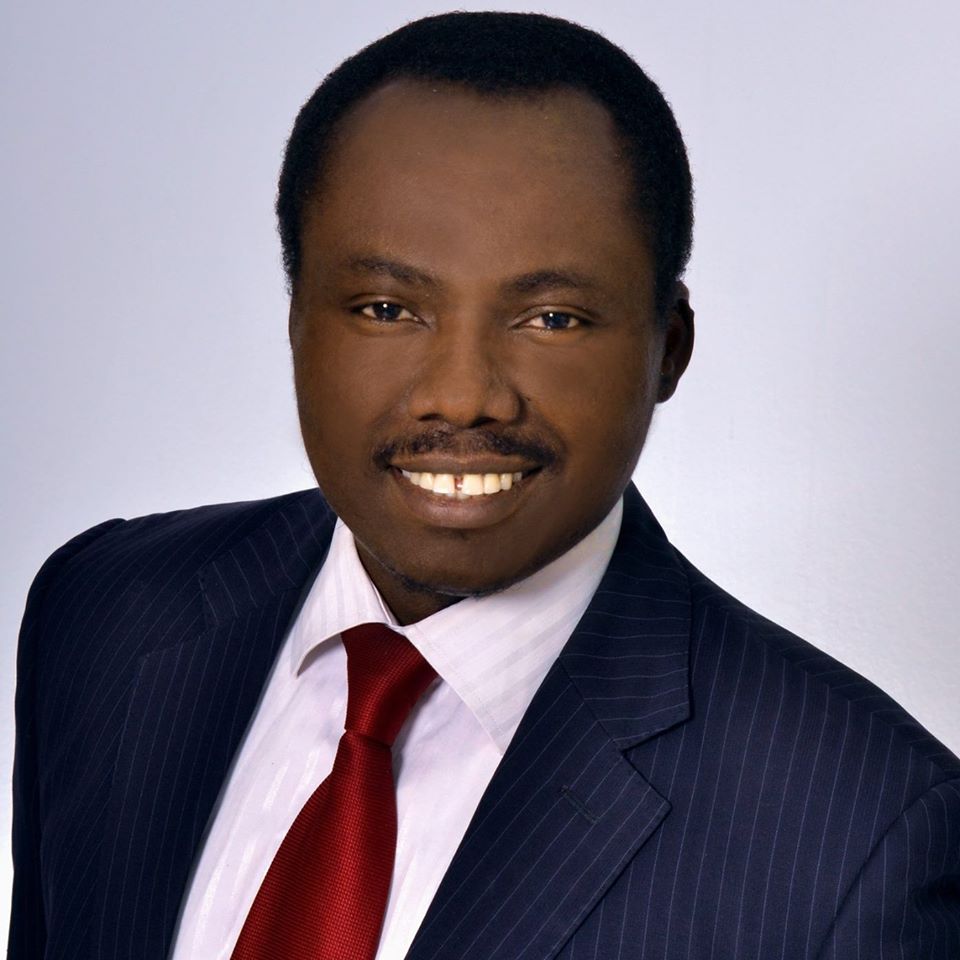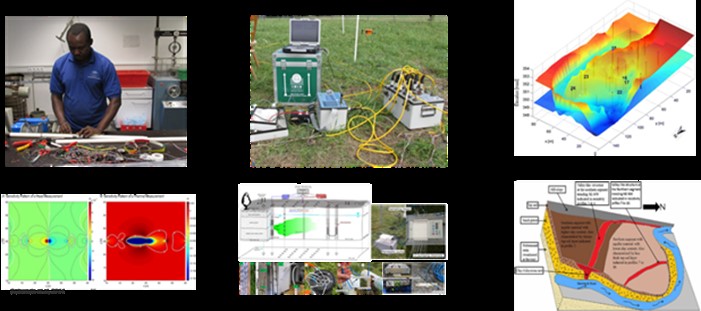Faculty: Kennedy O. Doro, Ph.D.

Associate Professor
Ph.D. University of Tuebingen, Germany 2015
M.Sc., B.Sc., Delta State University
Research and Teaching Interests
Advancing the use of geophysics in combination with hydrological
and in-situ technologies for investigating shallow subsurface 'states' and processes.
419.530.2811 | kennedy.doro@utoledo.edu
Curriculum Vitae (PDF)
View dr. Doro's Publications
Research Dr. Doro's HEG-Lab Teaching
Research

The shallow subsurface environment with depth ranging from a few to tens of meters below the surface is characterized by a high level of heterogeneity from pore to geologic scale. This results in high variability in spatial and temporal distribution of properties and processes within it. The implication of this is that the ability to predict the distribution of soil moisture and nutrients, groundwater flow, the fate and transport of chemicals, the engineering properties of soils as well as the location of ancient structures and buried objects within the shallow subsurface is limited. This is a constrain on the understanding, use and sustainable management of the shallow subsurface and its resources.
Our research at the Hydro- & Environmental Geophysics Lab (UToledo HEG-Lab) focuses on advancing the use of geophysical methods in combination with In-Situ (Direct-Push & Direct Sensing) and hydrological methods for improved characterization of shallow subsurface heterogeneities as well as monitoring the state and processes within it; with applications for:
- soil and hydrological processes investigation and management;
- monitoring biogeochemical processes and contaminated sites;
- investigating engineering, archaeological and forensic sites;
- and other environmental applications.
We combine both numerical and laboratory studies with field experimental implementations to obtain images of the shallow subsurface and estimates the needed hydraulic and biogeochemical parameters for developing and calibrating an integrated system’s model. Available facilities include geophysical equipment for electrical resistivity, induced polarization, self-potential, electromagnetics, ground penetrating radar, gravity, magnetics and seismic measurements; computational and inversion facilities as well as a modern laboratory and field hydro-geophysics test sites.
We combine both numerical and laboratory studies with field experimental implementations to obtain images of the shallow subsurface and estimates the needed hydraulic and biogeochemical parameters for developing and calibrating an integrated system’s model. Available facilities include geophysical equipment for electrical resistivity, induced polarization, self-potential, electromagnetics, ground penetrating radar, gravity, magnetics and seismic measurements; computational and inversion facilities as well as a modern laboratory and field hydro-geophysics test sites.
Teaching
I embrace a holistic and balanced approach to teaching general and applied environmental geoscience related subjects particularly Applied Geophysics, Hydrogeophysics, Hydrogeology and Contaminated Site Management. I emphasize a balanced mix of experimental, qualitative and quantitative approaches to understanding geological processes, occurrences and applications integrating current research and industry related examples.
In the spring semester 2020, I will be teaching EEES 2100 - fundamentals of geology [4 hours] which involve a review of earth materials and the dynamic external and internal processes active on earth; the physical and biological history of the earth. See the department and college course schedule for more details.
As a growing research group, we are actively looking for graduate and undergraduate research students. For potential projects, contact Dr. Kennedy Doro via kennedy.doro@utoledo.edu.
Publications
View Dr. Doro's Google Scholar page.
K.O. Doro (2018): Static and transient targets imaging using geophysical methods: the “knowledge-transfer” challenge (Invited Author) AGU 2018 Annual Fall Meeting, Washington DC, USA
K.O. Doro (2018): Data Driven Policies: A Challenge for Academics and Case for Soil and Water Resources in Nigeria. An Annual Lecture (Invited), delivered at the 11th Annual Lecture of the School of Sciences, Federal University of Technology, Akure, Nigeria
K.O. Doro, O.A. Cirpka, C. Leven (2015): Tracer tomography: Design concepts and field experiments using heat as tracer. Groundwater, 53:139 – 148. doi: 10.1111/gwat.12299
O. A. Cirpka, C. Leven, R. Schwede, K. O. Doro, P. Bastian, O. Ippisch, O. Klein, and A. Patzelt (2014). "Tomographic Methods in Hydrogeology." Chap. 9 In Tomography of the Earth’s Crust: From Geophysical Sounding to Real-Time Monitoring, edited by Michael Weber and Ute Münch. Advanced Technologies in Earth Sciences, 157-76: Springer International Publishing
K.O. Doro, C. Leven, O.A. Cirpka (2014): Tracer tomography: Conceptual design and field experiments using heat and uranine as tracers. Presented at the German Association of Hydrogeologists – FH-DGG, Bayreuth
K.O. Doro, O.A. Cirpka, A. Patzelt, C. Leven (2014): Salt tracer and 3-D time lapse electrical resistivity tomography. Presentation at the at the AGU Annual Fall Meeting, San Francisco, USA
K.O. Doro, C. Leven, O.A. Cirpka (2013): Delineating subsurface heterogeneity at a River Loop using geophysical and hydrogeological methods. Environ. Earth Sci., 69 (2) 335 – 348 doi: 10.1007/s12665-013-2316-0


